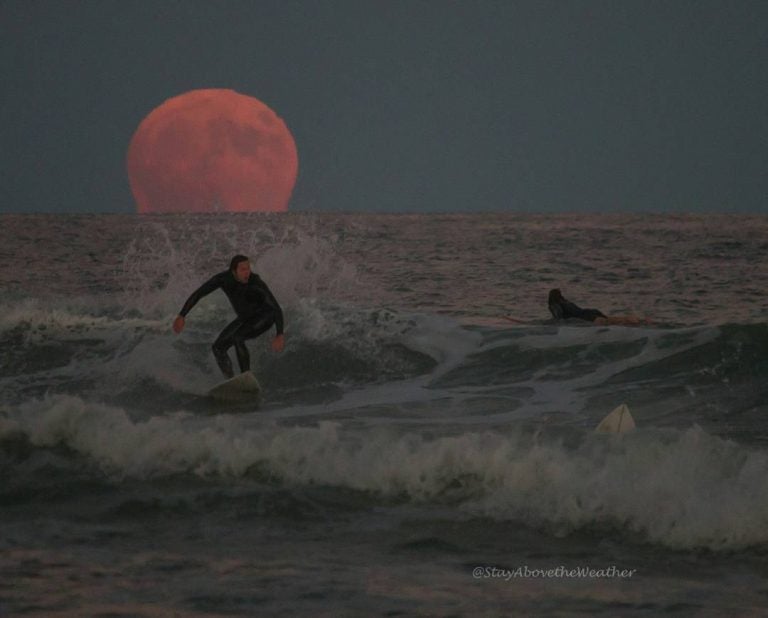Upcoming ‘Beaver Moon’ will be the largest since 1948

The moonrise as seen from Long Beach Island on October 15
The much-advertised Beaver Moon, set to reach its full phase Monday morning, will be the largest since 1948.
It will also be the second of three consecutive supermoons, according to a report on Space.com.
The moon, which will be the closest and brightest of this year and the largest since 1948, will appear full “to the casual observer” the day before and after, according to the report.
A statement from NASA, which calls a supermoon “undeniably beautiful,” provides insight into the term:
A supermoon, or perigee full moon can be as much as 14% bigger and 30% brighter than an apogee full moon. However it’s not always easy to tell the difference. A 30% difference in brightness can easily be masked by clouds or the competing glare of urban lights. Also, there are no rulers floating in the sky to measure lunar diameters. Hanging high overhead with no reference points to provide a sense of scale, one full moon looks much like any other.
The next supermoon comes on December 14. Although not as close as the upcoming Beaver Moon, next month’s lunar show will be “remarkable for a different reason,” according to NASA, since the bright moonlight “will reduce the visibility of faint meteors five to ten fold.”
If you miss it, you’ll need to wait until Nov. 25, 2034, the next time the moon will be as close to Earth.
So mark your calendars.
WHYY is your source for fact-based, in-depth journalism and information. As a nonprofit organization, we rely on financial support from readers like you. Please give today.

